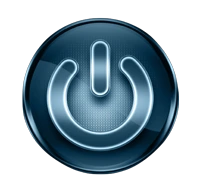Where can I get images for my website?
You actually have a few different options when it comes to obtaining images for your website.
Option #1 – you may already have pictures of your business or work. If this is the case you can send any photos you have to your website designer and he or she will add and upload them to your website for you.
Option #2 – You can buy Royalty Free Stock Photos from websites like http://bigstockphoto.com or http://gettyimages.com. Typically they come out to about $1.00 USD per image.
Option #3 – You can hire a Photographer to come in and take High Quality pictures for your new website.
Option #4 – You can do a Google search for images. This is where you really need to be careful because some images are actually Copyrighted and using them could land you in a bit of legal trouble if you don’t remove them when requested.
What Image Types should I use for my Website?
There are a lot of different image file formats types that you may come across. Photographs should always be saved as a JPEG and Graphics should always be saved as a PNG which is transparent image which can blend into the background with ease. Every other image type you should avoid and stay away from when it comes to your website.
What size should I make my images?
This depends on where you are going to place your images on your website. For example if you have a Slideshow on your homepage you will need to make your images slightly bigger to fit the slideshow. The larger images you use the longer it will take your website to load up those images on each page which may result in a delayed page load. If your website is slow loading due to large images you will want to make sure to size down your images so your pages load up immediately.
If you are adding images to pages make sure your images are around 600 x 600 pixels or less to make sure your website is loading up at a fast speed. If you for some reason have to use very large images I would suggest using some sort of image plugin that will help load the images up faster and reduce website load time.
Image SEO (Search Engine Optimization)
When adding images the Search Engines like Google, Bing, Yahoo, etc… send whats called spiders to index your website. These spiders search through your website domain name, page titles, description, keywords and text on every page of your website. Once the Search Engine is done indexing your website your website URL gets placed on the web.
When it comes to images the Search Engines actually can’t see your website images unless they are attached with what is called an ALT Tag. This tag allows the Search Engines to see the image and associate it with a title. So for example if your business name is Web Tech Solutions and you are uploading a Logo image my ALT Tag for that image would be “Web Tech Solutions Logo“. Once that is in place you should then be able to Google Web Tech Solutions Logo and click on images and then your image should show up in the search results. Having ALT Tags on all your images also helps with your overall website optimization and SEO.
Image Quality
When it comes to your website image quality is very important! The images you use are going to be one of the deciding factors if someone is going to use your services when they visit your website. If you are using low quality images it will make your website and business look unprofessional. Your pictures are a direct reflection on how potential customers and clients perceive your business so always invest in having good pictures for your website.
